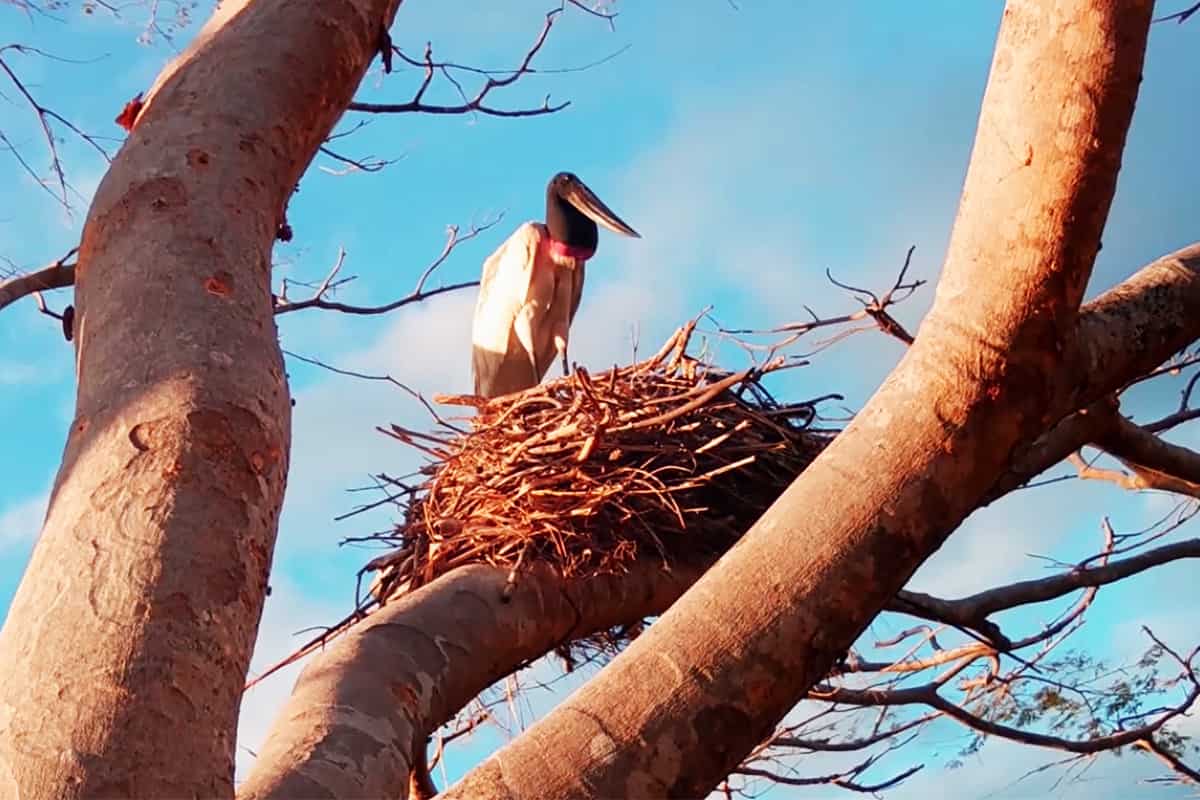Recent reports from the Arenal Tempisque Conservation Area (ACAT-SINAC) showed an increase in Jabiru sightings during the months of February and March, particularly in the cantons of Bagaces, Cañas, and Abangares.
While this could be exciting news, SINAC officials have noted concerning signs among these majestic birds. Upon field visits, officials observed slight plumage damage, likely incurred through interactions with wire fences and other unknown factors as they traversed various bodies of water in Guanacaste province.
In response to these observations, MINAE-SINAC officials, alongside wildlife experts from the Las Pumas de Cañas Rescue Center and Universidad Estatal a Distancia (UNED), have launched an investigation to ascertain the underlying causes of this behavior and its potential effects on the Jabiru population.
As part of their efforts, the institution urges the public to refrain from any interactions with these birds to facilitate their recovery from these adverse effects.
“The Jabiru, an important aquatic bird found solely in Guanacaste and the Northern Caribbean, ranks among Costa Rica’s largest avian species and regrettably, one of the most endangered within our territory due to its declining population. It is crucial that we maintain a vigilant watch over and protect this vital species, and we earnestly call upon the community to stand with us in our conservation efforts,” stressed Alexander León, Director of the Arenal Tempisque Conservation Area (ACAT).
This species is the largest bird in Costa Rica and only inhabits Guanacaste and the northern Caribbean. There are only two types in the country: the American stilt, Mycteria americana, and the ventless gallinule, Jabiru mycteria, which is one of the biggest species in the Americas.
The Municipal Government of Bagaces Canton declared the Jabiru a bird of cantonal interest, a move endorsed in the Ordinary Session No. 73 on December 7, 2021.
It is estimated that there are no more than 100 individuals of Jabiru in our country. In the past it was common to see them in the wetlands of the Bajo Tempisque, however, the accelerated degradation of its habitat, water pollution and its specificity in many topics of its natural history, make it very vulnerable.
SINAC has established channels for the public to report any suspicions of hunting, trafficking, or disturbance of nests of this species. Individuals can reach out by dialing 1192 or visiting the SITADA website (www.sitada.go.cr) to report such activities






